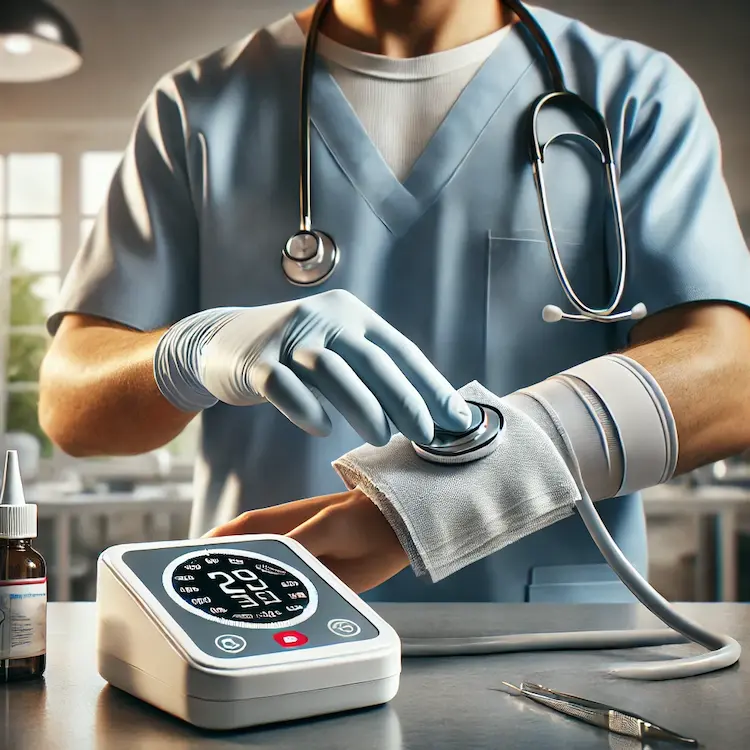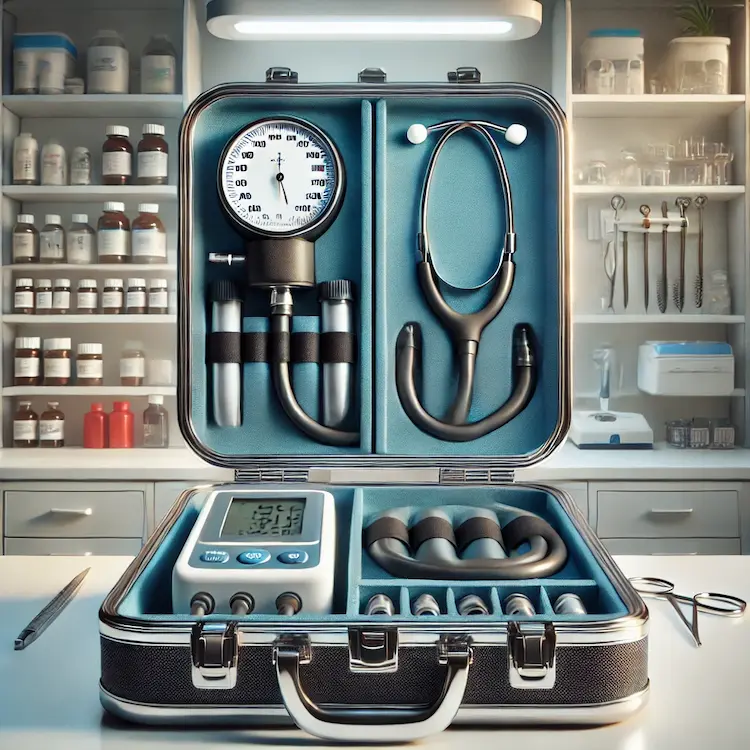Maintaining a sphygmomanometer is a crucial tool for measuring blood pressure accurately. Whether used in a clinical setting or at home, its reliability depends on proper maintenance. Incorrect readings due to poor upkeep can lead to misdiagnosis, unnecessary treatments, or undetected hypertension.
In this guide, we will explore the best practices for maintaining your sphygmomanometer. We will discuss its importance, the impact of inaccurate readings, common maintenance mistakes, and effective cleaning and storage techniques. Additionally, we will compare different types of sphygmomanometers and provide practical steps to keep them in top condition.
Why Proper Maintenance is Essential
Impact of Inaccurate Blood Pressure Readings
Regular blood pressure monitoring is essential for diagnosing and managing hypertension. A poorly maintained sphygmomanometer can lead to:
- False high readings → Unnecessary medication, anxiety, or lifestyle changes.
- False low readings → Undetected high blood pressure, increasing stroke or heart disease risk.
- Inconsistent readings → Confusion in medical diagnosis and treatment planning.

Statistics on Blood Pressure and Equipment Reliability
- According to the World Health Organization (WHO), over 1.28 billion adults worldwide have hypertension, but nearly 46% are unaware of their condition.
- A study in the Journal of Clinical Hypertension found that 30% of home blood pressure monitors provide inaccurate readings due to improper calibration or maintenance.
- The American Heart Association (AHA) recommends recalibrating sphygmomanometers at least once every two years to ensure accuracy.
Types of Sphygmomanometers and Their Maintenance Needs
There are three main types of sphygmomanometers, each requiring different care:
Mercury Sphygmomanometer
- Most accurate type, but requires special handling.
- Maintenance tips:
- Store upright to prevent mercury leakage.
- Keep away from direct sunlight and magnetic fields.
- Check mercury levels regularly and avoid tilting.
- Clean with a dry cloth; never use water or alcohol-based cleaners.
Aneroid Sphygmomanometer
- Portable and commonly used in clinics and homes.
- Maintenance tips:
- Avoid dropping; the dial mechanism is sensitive.
- Store in a protective case when not in use.
- Recalibrate every 6 to 12 months.
- Check the cuff for leaks and replace worn-out rubber tubing.
Digital Sphygmomanometer
- Most convenient for home use but requires regular battery checks.
- Maintenance tips:
- Use manufacturer-approved batteries to prevent device damage.
- Clean the screen and cuff with a soft cloth.
- Ensure the cuff fits properly to prevent errors.
- Store in a dry, cool place to protect internal sensors.

Common Mistakes That Reduce Accuracy
Many people unknowingly damage their maintaining sphygmomanometer or reduce its accuracy. Here are some common mistakes:
| Mistake | Impact on Device & Readings | Solution |
|---|---|---|
| Storing in extreme temperatures | Affects digital sensors and mercury balance | Keep in a stable, cool environment |
| Wrapping the cuff incorrectly | This leads to inaccurate readings | Follow manufacturer guidelines for placement |
| Using an old or damaged cuff | Causes leakage and incorrect pressure | Replace cuffs when they show signs of wear |
| Skipping regular calibration | Readings become unreliable over time | Recalibrate at least every 12-24 months |
| Using alcohol-based cleaners | Can degrade rubber components | Use mild soap or specialized disinfectants |
Step-by-Step Guide to Cleaning and Storing Your Sphygmomanometer
Cleaning the Cuff
- Detach the cuff from the device if possible.
- If fabric, wipe with a damp cloth; avoid submerging in water.
- If rubber, clean with a mild disinfectant (no alcohol-based solutions).
- Allow the cuff to fully dry before reattaching.
Cleaning the Display and Tubing
- Use a soft, dry microfiber cloth to wipe the display screen.
- Check tubing for dust or dirt; clean with a damp, lint-free cloth.
- Avoid using harsh chemicals that could degrade the rubber.
Storing the Device Properly
- Mercury models: Store upright in a locked cabinet away from moisture.
- Aneroid models: Keep in a protective case to prevent dial misalignment.
- Digital models: Remove batteries if not in use for long periods to prevent corrosion.
Regular Calibration and Testing
- If readings seem off, compare with a clinically validated monitor.
- For home use, visit a pharmacy or medical professional for accuracy checks.
- Professional calibration should be done every 1-2 years for all types.
Comparison of Different Maintenance Approaches
| Method | Effectiveness | Best For |
|---|---|---|
| Manual cleaning with mild soap | ✅ Prevents dirt buildup | All types of sphygmomanometers |
| Disinfectant wipes | ✅ Quick but may degrade rubber over time | Digital models (avoid on rubber cuffs) |
| Professional recalibration | ✅✅✅ Ensures long-term accuracy | Mercury and aneroid sphygmomanometers |
| Self-check with a validated monitor | ✅ Useful for quick accuracy checks | Home users with digital monitors |
| Protective storage cases | ✅✅ Prevents physical damage | Aneroid and digital models |
Conclusion
Properly maintaining a sphygmomanometer is essential to ensure accurate blood pressure readings. A poorly maintained device can lead to incorrect diagnoses, affecting your health and well-being. By cleaning, storing, and calibrating your sphygmomanometer regularly, you can extend its lifespan and ensure reliable performance.
Key Takeaways
- Inaccurate readings can lead to serious health risks.
- Regular cleaning and proper storage prevent damage.
- Different sphygmomanometers require unique maintenance techniques.
- Calibration is necessary every 1-2 years.
- Avoid extreme temperatures, rough handling, and improper cuff placement.
Actionable Recommendations
- Check your device’s calibration date and schedule professional testing.
- Clean the cuff and screen regularly using proper methods.
- Store in a cool, dry place and avoid direct sunlight.
- Replace batteries or worn-out parts as needed.
- Always follow the manufacturer’s maintenance guidelines.


